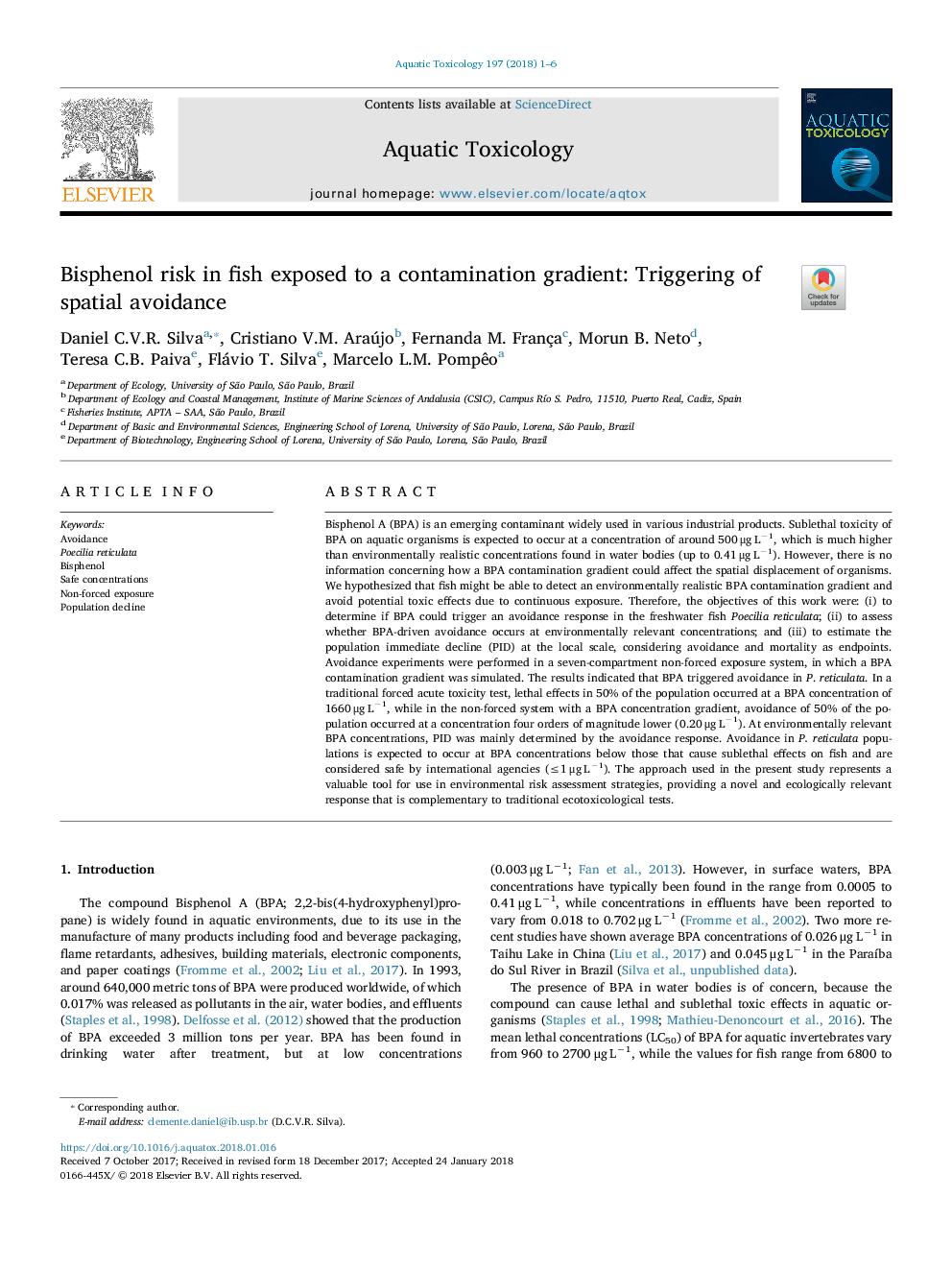ترجمه فارسی عنوان مقاله
خطر بیوسفنول در ماهی که در معرض یک گرادینت آلودگی است: راه اندازی اجتناب از فضای
عنوان انگلیسی
Bisphenol risk in fish exposed to a contamination gradient: Triggering of spatial avoidance
| کد مقاله | سال انتشار | تعداد صفحات مقاله انگلیسی |
|---|---|---|
| 160594 | 2018 | 6 صفحه PDF |
منبع

Publisher : Elsevier - Science Direct (الزویر - ساینس دایرکت)
Journal : Aquatic Toxicology, Volume 197, April 2018, Pages 1-6

